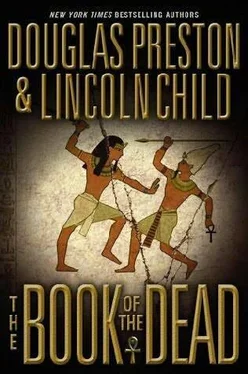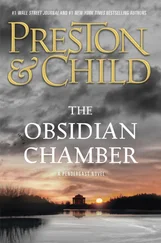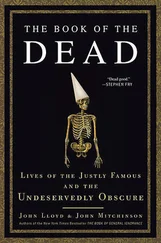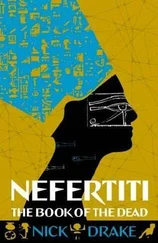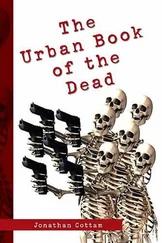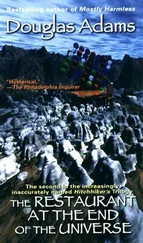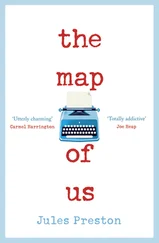The project was plagued with disaster from the beginning. The locals refused to work on the tomb, believing it to be cursed, and so Cahors dragooned a group of French soldiers to undertake the job. The first calamity struck when the inner tomb-which had been resealed in antiquity after the tomb was robbed-was broached. Nine men died almost immediately. Later, it was hypothesized that carbon dioxide gas from acid groundwater moving through limestone far below had filled the tomb, causing the asphyxiation of the three soldiers who first entered, along with the half-dozen others sent in to rescue them.
But Cahors was singularly determined, and the tomb was eventually taken apart, block by numbered block, and barged down the Nile to the Bay of Aboukir, where it was laid out on the desert sands in a vast array, awaiting transport to France.
The famous Battle of the Nile ended those plans. After Admiral Horatio Nelson met Napoleon’s grand flotilla-and soundly defeated it-in the most decisive naval battle in history, Napoleon fled in a small ship, leaving his armies cut off. Those armies soon capitulated, and in the terms of surrender, the British appropriated their fabulous collections of Egyptian antiquities, including the Rosetta stone-and the Tomb of Senef. A day after the signing of the terms of capitulation, Cahors stabbed himself in the heart with his sword while kneeling amid the stacks of blocks on the sands of Aboukir. And yet his fame as the first Egyptologist lived on, and it was a descendant of this same Cahors who was bankrolling the museum’s reopening of the tomb, à la distance.
Nora put the first sheaf of documents aside and picked up the second. A Scottish officer with the Royal Navy, Captain Alisdair William Arthur Cumyn, later Baron of Rattray, managed to acquire the Tomb of Senef in a murky transaction that appeared to involve a card game and two prostitutes. Baron Rattray had the tomb transported and reassembled on his ancestral estate in the Highlands of Scotland, went bankrupt doing so, and was forced to sell off most of his ancestral lands. The Barons of Rattray limped along until the mid-nineteenth century, when the last of the line, in a desperate bid to save what was left of the estate, sold the tomb to the American railroad magnate William C. Spragg. One of the museum’s early benefactors, Spragg shipped the tomb across the Atlantic and had it reassembled in the museum, which was under construction at that time. It was his pet project and he spent months haunting the site, hounding the workers, and otherwise making a nuisance of himself. In a tragic irony, he was crushed under the wheels of a horse-drawn ambulance just two days before the grand opening in 1872.
Nora took a break from her perusal of the documents. It was not quite three o’clock, and she was making better progress than she’d expected. If she could get this done by eight, she might have time to share a quick bite with Bill at the Bones. He would love this dark, dusty history. And it might make a good piece for the Times’s cultural or metropolitan section when the tomb’s opening neared.
She moved along to the next bundle, all museum documents and in much better condition. The first set of papers dealt with the opening of the tomb. In it were some copies of the engraved invitation:
The President of the United States of America
the Honorable General Ulysses S. Grant
The Governor of the State of New York the Honorable John T. Hoffman
The President of the New York Museum of Natural History
Dr. James K. Moreton
The Trustees and the Director of the Museum
Cordially invite you to a Dinner and Ball in honor of the opening of the
GRAND TOMB OF SENEF
Regent and Vizier to the Pharaoh Thutmosis IV,
Ruler of Ancient Egypt
1419-1386 B.C.
The Diva Eleonora de Graff Bolkonsky will perform Arias
from the New and Celebrated Opera Aïda
by Giuseppe Verdi
Egyptian Costume
Nora held the crumbling invitation in her hand. It amazed her that the museum commanded such a presence in those days that the president himself signed the invitation. She shuffled further and discovered a second document-a menu for the dinner.
Hors d’oeuvres Variés
Consommé Olga
Kebab Egyptien
Filet Mignon Lili
Vegetable Marrow Farcie
Roast Squab amp; Cress
Pâté de Foie Gras en Croûte
Baba Ghanouj
Waldorf Pudding
Peaches in Chartreuse Jelly
There were a dozen blank invitations in the file. She set one aside, along with the menu, in a “to be photocopied” folder. This was something Menzies should see. In fact, she thought, it would be marvelous if they could duplicate the original opening-without the costume ball, perhaps-and offer the same menu.
She began reading the press notices of the evening. It had been one of those great social events of late-nineteenth-century New York, the likes of which would never be seen again. The guest list read like a roll call at the dawn of the Gilded Age: the Astors and Vanderbilts, William Butler Duncan, Walter Langdon, Ward McAllister, Royal Phelps. There were engravings from Harper’s Weekly showing the ball, with everyone dressed in the most outlandish interpretations of Egyptian costume…
But she was wasting time. She pushed the clippings aside and opened the next folder. It also contained a newspaper clipping, this time from the New York Sun, one of the scandal sheets of the time. It had an illustration of a dark-haired man in a fez, with liquid eyes, dressed in flowing robes. Quickly she scanned the article.
Sun Exclusive
Tomb in New York Museum Is Accursed!
Egyptian Bey Issues Warning
The Malediction of the Eye of Horus
New York-On a recent visit to New York by His Eminence Abdul El-Mizar, Bey of Bolbassa in Upper Egypt, the gentleman from the land of the pharaohs was shocked to find on display at the New York Museum the Tomb of SENEF.
The Egyptian and his entourage, who were being given a tour of the museum, turned away from the tomb in horror and consternation, warning other visitors that to enter the tomb was to consign oneself to certain and terrible death. “This tomb carries a curse well known in my own country,” El-Mizar later told the Sun.
Nora smiled. The article went on in the same vein, mingling a stew of dire threats with wildly inaccurate historical pronouncements, ending, naturally, with a “demand” by the alleged “Bey of Bolbassa” that the tomb be returned forthwith to Egypt. At the conclusion, almost as an afterthought, a museum official was quoted as saying that several thousand visitors entered the tomb every day and that there had never been an “untoward incident.”
This article was followed by a flurry of letters from various people, many of them clearly cranks, describing “sensations” and “presences” they had experienced while in the tomb. Several complained of sickness after visiting: shortness of breath, sweats, palpitations, nervous disorders. One, which merited a file all its own, told of a child who fell into the well and broke both his legs, one of which had to be amputated. An exchange of letters from lawyers resulted in a quiet settlement with the family for a sum of two hundred dollars.
She moved to the next file, which was very slender, and opened it, surprised to find inside a single yellowed piece of cardboard with a label pasted on it:
Contents moved to Secure Storage
Читать дальше
